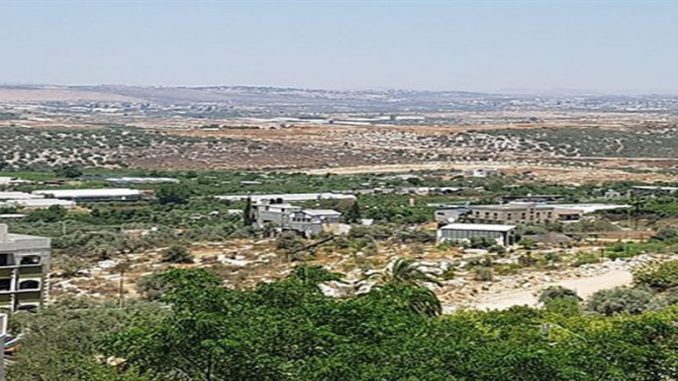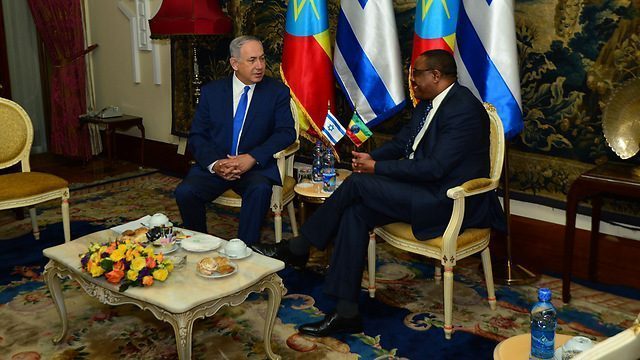
The Israeli security cabinet voted on Wednesday to postpone discussions regarding plans to expand the Palestinian city of Qalqiliya in the northern occupied West Bank, weeks after Israeli officials condemned the planned construction.
According to Israeli news outlet Ynet, the security cabinet ruled for no further steps to be taken with regards to the plan, which would see some 5,000 housing units built in Qalqiliya, until it convenes to discuss the matter on July 23.
The security cabinet also called on Israeli Attorney General Avichai Mandelblit to issue a ruling on how control of Area C, the 60 percent of the West Bank under full Israeli control, should be divided between the Israeli army and government, and how this would affect the plan.
“This is the first step in the right direction,” Yossi Dagan, the head of the Samaria Regional Council for illegal Israeli settlements in the northern West Bank, told Ynet.
“I call on the prime minister to complete this move and remove this absurd plan… from the agenda, and dedicate more time to advancing construction plans for the citizens of the State of Israel in Jerusalem, Judea and Samaria, and all over the country,” Dagan added, using the Israeli term for the occupied West Bank.
The security cabinet decided in late 2016 to expand the municipal boundaries of Qalqiliya into Area C, where Palestinians are essentially prohibited from building or developing without quasi-impossible to obtain Israeli permits.
While a number of right-wing Israeli politicians, including Prime Minister Benjamin Netanyahu, claimed they were not fully aware of the plans, far-right wing Defense Minister Avigdor Lieberman, who has been pushing the plan, has claimed that transcripts of cabinet meetings proved that high-level Israeli officials were informed of the plan.
The planned expansion of Qalqiliya has been seen as part of Lieberman’s “carrot and stick” policy, whereby harsher punishment would be imposed upon families and villages from which Palestinian “terrorists” originate, while economic benefits would be granted to areas that “have not produced terrorists.”
The expansion plan aims to address the growing need for housing in Qalqiliya, whose population is expected to rise from 51,000 today to 80,000 residents by 2035.
While Israeli politicians went up in arms over initial reports that the expansion would involve 14,000 housing units, the Israeli Planning Administration has stated that the “realistic capacity” of the plan in fact only amounts to 6,187 units — 1,000 of which have already been built without Israeli permission and are expected to be retroactively legalized.
Right-wing Israeli politicians denounced the agreement made between the Palestinian Authority (PA) and Israeli officials to rescind some of Israel’s control in Area C, fearing that such a move could permanently relinquish large parts of Area C to a future Palestinian state should a two-state solution be reached between Israelis and Palestinians.
Initial outrage from right-wing officials over the plans was also centered around the claim that illegal settlement expansion was being hindered at the same time, despite the fact that construction began on the first new illegal Israeli settlement to be built in the occupied West Bank in 25 years in June.
Despite the Palestinian Authority (PA) and the international community pushing for a two-state solution along 1967 lines with East Jerusalem as the Palestinian capital, a number of far-right Israelis have called for the annexation of more territory to Israel — with demands ranging from the incorporation of major illegal settlement blocs in the occupied Palestinian territory into Israel to the full annexation of the West Bank.
The 1995 Oslo Accords between the Palestine Liberation Organization (PLO) and Israeli authorities divided the West Bank into Area A, B, and C. Area A, comprising the populated Palestinian cities and making up 18 percent of the West Bank, would be controlled by the newly formed PA, while Area B remained under Israeli army control with the PA controlling civil affairs.
Area C, which contains the majority of natural resources and open spaces in the Palestinian territory, was however placed under full Israeli military control.
The Israeli-controlled land was expected to be gradually transferred to the PA over a five-year period, according to the Oslo agreements. Yet, almost two decades later, the land has remained under Israeli control.
Area C, along with East Jerusalem, has been the site of Israeli settlement expansion in contravention of international law, while Israel’s separation wall has further divided Palestinian communities.
Israeli rights group B’Tselem reported that Palestinians experienced in 2016 the highest number of Israeli demolitions since the group began recording the incidents. At the same time, settlement watchdog Peace now reported that Israel’s illegal settlement construction in the West Bank increased by 34 percent in 2016, with Israeli authorities initiating construction on 1,814 new settler housing units.
According to Palestinians and rights groups, Israel’s overall goal, both in its policies in Area C and Israel’s settlement enterprise, is to depopulate the land of its Palestinian residents and replace them with Jewish Israeli communities in order to manipulate population demographics in all of historic Palestine.



